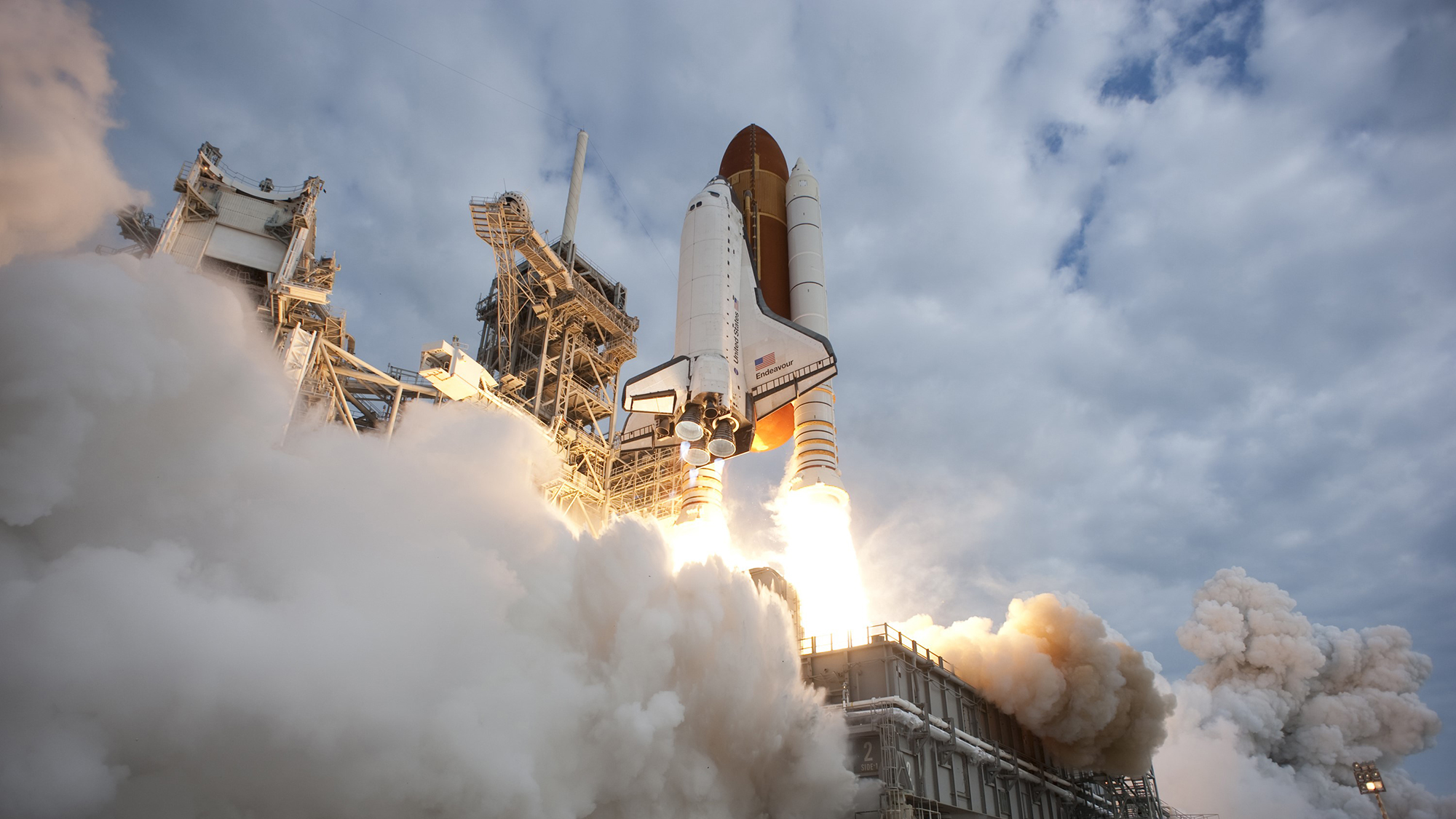

If you want to see a retired NASA space shuttle, you have a few options. You could travel to Virginia and see Discovery, or journey to the Kennedy Space Center Visitor Complex in Florida to check out the angled Atlantis. And don’t forget about Enterprise in New York City, a shuttle that never flew into space but did glide through the atmosphere.
Then there’s Endeavour. Right now, that space shuttle, which made 25 trips to space and back, is on display horizontally at the California Science Center in Los Angeles. But the museum has towering plans for the shuttle: It’s going to move it into a vertical position, and display it with solid rocket boosters and an external fuel tank, all attached together as if the ship was about to blast off into space. When that happens, it’ll be the only shuttle displayed vertically. And instead of having to cope with the forces of a launch, the orbiter assembly will need to withstand any California earthquakes.
As Endeavour is now, “it’s a great display, you can walk under it, look up at the tiles—it’s wonderful,” says Jeffrey Rudolph, the president and CEO of the museum. “But it will be amazing, and we think [a] far better display, when it’s vertical, with the whole stack. This’ll be 200 feet tall—20 stories tall—and you’ll be able to look at it [from] multiple perspectives, multiple views, at multiple levels.”
To get it into the launch position requires an operation worthy of an actual NASA mission. It kicked off in earnest on July 20, when two components called aft skirts came in via crane and were lowered into position on a concrete pad. Each of those aft skirts are as wide as 18 feet and weigh 13,000 pounds and have both lifted off on actual shuttle flights.

The aft skirts comprise the base of the solid rocket boosters (SRBs). Other segments, called the solid rocket motors, which are about 116 feet tall, will join them to make up each SRB, as will parts called forward assemblies. Those two SRBs will weigh in at a total of a quarter million pounds together. Before Endeavour can join those SRBs, the 76,000-pound external tank (technically known as ET-94) must be moved into place, too.
The plan holds that early next year, the 176,000-pound Endeavour itself will be lifted into launch position using two cranes, one of which will simply make sure the orbiter’s tail doesn’t hit the ground.

For this whole assembly operation, “we’re basically following the same process that Kennedy Space Center used,” Rudolph notes, adding that no one has put together a shuttle at a non-NASA facility before. As an example, this incredible time-lapse video shows the space shuttle Atlantis being lifted and then mated with its solid rocket boosters and external fuel tank for the very last shuttle flight in July of 2011.
Like a real NASA launch, Rudolph adds that weather will play a key role in when they actually carry out that maneuver of lifting the actual orbiter into place. Windy conditions, which could interact with the orbiter, would cause a delay. “It is a glider,” he points out. “It’s got wings.”
[Related: Astronauts explain what it’s like to be ‘shot off the planet’]
The whole flight assembly—Endeavour, the solid rocket boosters, and the tank—will together weigh just over half a million pounds, according to the California Science Center. “We’ve got the last hardware—the last external tank—so it’s the only place in the world you’ll be able to see a full space shuttle stack in launch position,” Rudolph says.
To mitigate against the possibility of an earthquake, the whole shuttle configuration will be perched on a thick concrete pad that weighs more than 3 million pounds. “It’s a 8-foot-thick concrete pad that is surrounded on all four sides by a 3-foot moat, basically,” Rudolph explains. And under that pad are a half-dozen seismic isolators, which Rudolph compares to “big ball bearings.” The Los Angeles Times has helpful graphics.

“That whole pad can move independently of the building, and will withstand any foreseeable earthquake,” he adds.
Rudolph says that it will be a couple years before the facility is actually open, and that the entire planned Samuel Oschin Air and Space Center that will house Endeavour and other exhibits costs $400 million. According to a previous NASA estimate, it cost around $450 million to actually launch a shuttle. A more recent estimate via the Center for Strategic and International Studies put the number at well over $1 billion for each launch, in fiscal year 2021 dollars.
Rudolph says that they had hoped to display a space shuttle in this way starting as early as three decades ago. “I actually have a rendering from 1992 showing a space shuttle in launch position,” he says. With any luck, the shuttle will be moved into place in January of 2024.
Watch a short video about the new facility, below.

